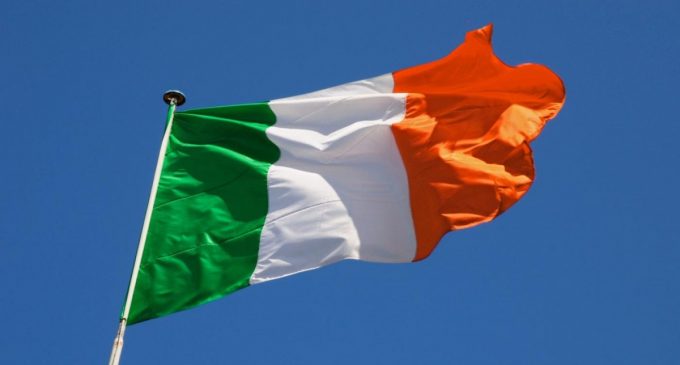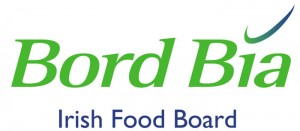Irish Food and Drink Exports Steadied to 2% Decline in 2020 During Period of Record Economic Disruption

New figures released in the annual Bord Bia Export Performance and Prospects report 2020/2021 show that the value of exports of Irish food, drink and horticulture were held to a marginal 2% decline in 2020, valued at €13 billion (v €13.2 billion in 2019), during a period of unprecedented change and challenge that saw the largest disruption to normal market operation, globally, since the end of World War II.
The figures underline the dividend of a decade-long diversification strategy that has seen Ireland achieve a broad global base for its food and drink exports which now reach in excess of 180 countries. Increases have been recorded in the value of Irish dairy, pigmeat and sheepmeat exports, along with very significant increases in the value of exports to Africa and the Middle East as new international markets come to the fore.
The Chief Executive of Bord Bia, Tara McCarthy, said: “Behind the remarkable export performance of our food and drink sector in 2020 are seismic challenges at a strategic, category and channel level. Last year was a pivotal year of learning for us all and 2021 will be even more significant in terms of how we apply these learnings to rebuild and drive growth in new and emerging markets. The success of the industry’s transition to doing business virtually – from participation at online trade fairs to the development pioneering virtual trade missions – show that we can, and we will, rise to the challenge of doing business in new and inventive ways. This resourceful approach, coupled with the sectors’ focus on geographic and customer diversification over the past decade has now paid dividends and is integral to safeguarding our exports.”
Export Destinations – the Diversification Dividend
The success of the diversification strategy of the Irish food and drink industry is evidenced by reduced dependence on the UK market and increased geographic spread of exports, particularly since the Brexit referendum in 2016. In the period since the UK voted to leave the EU in 2016, Ireland’s global exports of food and drink grew by over €1.9 billion, a 16% increase in value.
Exporters have been expanding the value of exports while increasing the proportion of those exports that are destined for high-growth, high-potential priority markets, largely in Asia but also in the Middle East, Africa and North America. The majority of growth since 2016 (€1.9 billion) comes from the EU27 (46% or €871 million) and international markets (43% or €817 million). The UK accounted for just 10% of growth (€195 million) since 2016.
Since 2016, the value of Irish food and drink exports to Asia has increased 14% to €1.4 billion. Exports to Africa over the same period have increased by a significant 86% to €883 million in value, while continental Europe (EU27) grew by 25% to €4.4 billion.
In 2020, 33% of Ireland’s total food and drink exports were destined for International markets outside the UK and EU, while 34% were destined to the EU27 and 33% to the UK.
Outlook & Prospects for Irish Food and Drink Exports in 2021
Commenting on the outlook for 2021, Tara McCarthy concluded: “For Irish food and drink producers, the global supply demand dynamic for their produce remains positive in 2021 despite global challenges and continued uncertainty as we navigate Brexit and our fragile exit from the pandemic. As we start 2021, exporters are reporting solid order volumes which is a direct result of the strength of trading relationships nurtured over many years. That said, the extra costs and complexities of trade with our largest destination market, as new customs procedures interrupt the smooth flow of produce, will cause significant challenges and should not be underestimated.
 “With a return to global economic growth forecast for 2021, we anticipate continued strong global demand for Irish dairy. We expect the global meat supply balance to favour producers, particularly in Asia which has been at the centre of much Irish export growth. All around the world consumers and customers are increasingly demanding credentials around sustainability that Ireland is well-placed to meet as we seek to differentiate ourselves from competitor exporting nations and to navigate gastro-nationalism in key markets. Our action plans, programmes and priorities for 2021 and beyond are centred on value creation for the full supply chain – from farm to fork. With Bord Bia’s insight driven support, we remain focused on partnering with this vibrant and resilient sector to pursue global growth in a very different world.”
“With a return to global economic growth forecast for 2021, we anticipate continued strong global demand for Irish dairy. We expect the global meat supply balance to favour producers, particularly in Asia which has been at the centre of much Irish export growth. All around the world consumers and customers are increasingly demanding credentials around sustainability that Ireland is well-placed to meet as we seek to differentiate ourselves from competitor exporting nations and to navigate gastro-nationalism in key markets. Our action plans, programmes and priorities for 2021 and beyond are centred on value creation for the full supply chain – from farm to fork. With Bord Bia’s insight driven support, we remain focused on partnering with this vibrant and resilient sector to pursue global growth in a very different world.”
Sectoral Analysis
Dairy:
- Dairy continued its growth trajectory into 2020 delivering a 3% uplift in the value of exports to €5.2 billion; the second year that dairy exports exceeded the €5 billion mark. This growth was achieved despite commodity price reductions for key elements of the export mix, including butter.
- Dairy is the most geographically diversified category of all the major Irish food and drink exports. 49% of all dairy exports are destined for markets outside the UK or the EU27. Exports to these markets was the key growth driver in 2020. In terms of product categories, very strong growth was achieved in specialised nutritional powders and other key powders (including SMP, WMP and casein).
- Butter performed ahead of expectations despite significant commodity price decline and the impact of a 25% tariff in the US. Butter exports were worth €961 million in 2020, the most valuable of all the dairy sub-categories, albeit just marginally ahead of cheese exports (butter exports were worth €961.4 million while cheese exports were worth €961.3 million)
- Exports of cheese increased slightly (+1%) to reach €961 million. Cheese exports to Asia, North Africa and to the EU27 accounted for the largest portions of growth, underlining the success exporters have had in diversifying markets for Irish cheese beyond the UK.
- SMP prices and demand globally were strong throughout 2020, delivering value growth on the same export volume as 2019.
- Specialised nutritional powders had a positive year, with growth to traditional and new markets. Exports in this category were worth €956 million.
Meat and Livestock:
- The second largest category in Irish food and drink exports, the meat and livestock sector, delivered a resilient performance in 2020 with a 2% increase in total value to €3.4 billion. A significantly challenging year for beef exports was offset by strong growth in the value of pigmeat and sheep exports while the live export sector also experienced a return to growth in 2020.
- In a year of unprecedented challenge, the value of primary beef exportswas held to a 2% decline to €1.9 billion in 2020. This decline was due to the well documented pandemic related disruption in the core destination markets for beef, alongside continued challenges in access to mainland China. In the UK – which represented 44% of primary Irish beef exports – extensive retail channel demand somewhat counteracted the significant decline in foodservice. Beef consumption in the EU declined by 2% in 2020 due to the closure of the foodservice channel for the majority of the year and changing consumer habits. Having gained market access in 2018, Irish beef exports to China were disrupted from May 2020 due to an import suspension. It is worth noting that in the first five months of 2020, Ireland’s beef exports to China were €23 million, representing a 134% increase on same period 2019. The trajectory had been very positive prior to the import suspension in May 2020.
- Sheepmeat values increased 12% to €356 million in 2020. Tighter supplies of sheepmeat globally and an improvement in demand in key EU markets drove this increase. A decline in UK sheepmeat exports to EU27 markets also created an opportunity for Irish produce during 2020.
- Primary pigmeat exports increased by a significant 14% to €586 million in 2020. 41% of all Irish primary pigmeat exports are now destined for Asia, with China accounting for the majority. Increases in the value of pigmeat export to Japan and Vietnam occurred also, as demand for Irish pigmeat outstripped supply.
- Following a year of growth in 2019, poultry exports declined by 2% in value in 2020 to €152 million but volume increased by 4%. Covid-19 brought significant headwinds for poultry export prices and the sector was impacted by a 14% decline in exports to the UK which was offset somewhat by a 16% increase in International markets to €43 million.
Horticulture:
- Horticulture and cereals exports increased by 8% to €221 million in 2020 with the UK being the core market. The primary constituents of this export mix are mushrooms, primary cereals and amenity horticulture. The value of mushroom exports rose by 14% to €115 million.
Seafood:
- 2020 saw adecline in the value of primary Irish seafood exports of 10% to €443 million. This was due to the disruption of exports in the shellfish category normally destined for the foodservice channel in key EU27 markets and in Asia. However, there was a significant increase in seafood exports to Africa in 2020 representing a success story for the pelagic category.
- The Trade and Cooperation Agreement struck between the EU and UK at the end of 2020 will reduce Irish and other European fishing vessels access to UK waters. Over a five year period to June 2026 the quota available in those waters will reduce 25%. This will likely have notable effects for the Irish fleet on pelagic and prawn catches, a significant proportion of which are currently sourced in UK waters.
Prepared Consumer Foods (PCF):
- Prepared consumer foods (PCF) exports in 2020 were worth €2.5 billion, representing a 4% reduction year-on-year due to channel disruption brought on by the pandemic. The PCF category includes meal solutions, confectionary, non-alcoholic beverages, ingredients and value-added meat, seafood, and horticulture. It is a category which is highly responsive to consumer behaviour change.
- The largest part of this category, and the source of the largest decline, is value-added meats (VAM). These products are supplied almost entirely to the foodservice channel. VAM exports were worth €648 million in 2020, a 14% decline on 2019.
- Meal solutions – the subcategory providing pizza, ready meals and soups to the retail channel – in contrast had a strong year growing 8% in value to be worth €506 million. This growth reflects the strong and sustained retail demand throughout 2020, and illustrates the contrasting fortunes of retail and foodservice channels in 2020.
- 68% of all PCF exports are destined for the UK market, making this sector one of the most Brexit exposed.
Alcohol:
- Covid-19 has had a significant impact on alcohol exports. Alcohol exports overall were down 19% in 2020 to €1.3 billion.
- Notwithstanding that decline, the value of alcohol exports remains 12% higher than they were pre-Brexit in 2016 underscoring the scale of the growth trajectory in this category in recent years. The majority of the decline can be accounted for by declines in the value of exports of whiskey (-€205m), cream liqueurs (-€53m) and beer (-€51m).


































